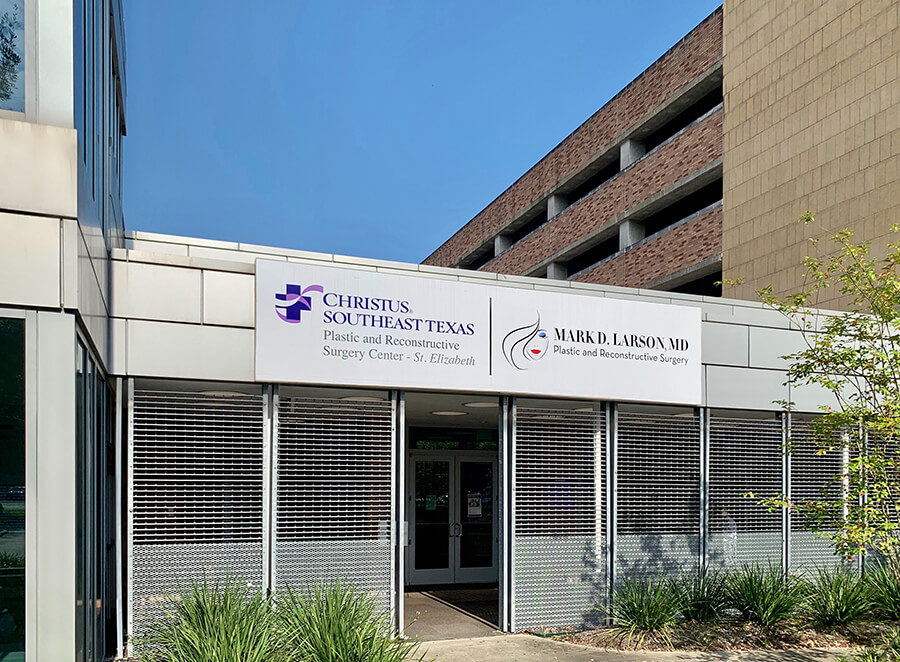Breast Augmentation
Breast augmentation, also called “augmentation mammaplasty,” is a procedure designed to enhance the size and improve the shape of a woman’s breasts. Many women report an increased sense of confidence as a result of the added volume and youthful contours that result from this procedure.
Dr. Larson is considered as one of the top breast augmentation surgeons in Texas. He is a member/consultant for the distinguished Mentor LEAD Committee. Mentor is the top implant manufacturer in the United States and internationally known.
The Lead Committee is made up of the top 50 breast augmentation surgeons in the United States. Dr. Larson has been honored to be on this committee because of his experience, expertise, surgical volume and commitment to providing excellence to the patient/consumer.
Dr. Larson was one of the first surgeons in Texas to perform the Endoscopic Transaxillary Breast Augmentation. Dr. Larson performs all types of breast augmentation. Dr. Larson has performed thousands of breast augmentations over the past 20 years. He takes pride in expertly and accurately performing your breast augmentation.
Dr. Larson performs his surgeries in his double accredited free standing surgery center. Larson’s Cosmetic and Breast Surgery Center is licensed as an ambulatory surgery center (ASC) by the Texas Department of State.

Consultation
During your appointment you will have a one-on-one consultation with Dr. Larson. This appointment includes an analysis of your health history, any medications you are taking, and what you desire to achieve with the procedure.
Dr. Larson will assist you in making this choice comfortable and educational.
- He will discuss the different types of breast augmentation operations
- He will discuss the different types of implants and sizes
- You will evaluate and personally feel both saline and silicone implants
- You will view various before and after photos
- You will be examined and he will discuss your specific breasts problems and desires
- You will be given a complimentary bra which you may place sizers in, to choose your desired size
How do I know if a breast augmentation is right for me?
Women have many different reasons for choosing breast augmentation surgery, but most of them fall into one of these four categories:
Naturally Small Breasts
Women who have small or asymmetrical breasts due to genetics can achieve enhanced volume and natural-looking results with breast augmentation.
Change in Breast Size After Pregnancy
Pregnancy and breastfeeding often lead to a reduced breast size and cause a deflated breast appearance. Breast augmentation can restore your original breast volume or enhance them to an even larger size.
Breast Revision
If a previous breast surgery was unsatisfactory or resulted in complications, a secondary breast augmentation can be performed to correct any concerns.
Sagging Breasts
Aging, pregnancy, and significant weight loss can cause the breasts to sag and have a poor shape. A breast augmentation (often performed with a breast lift) can improve the shape of the breasts and provide a more youthful appearance.
Silicone vs. Saline
Silicone Implants
- FDA-approved for women 22 years or older
- Pre-filled with silicone gel
- Lower rate of rupture than saline implants
- Said to feel more natural than saline implants
- less visible and palpable ripples
Saline Implants
- FDA-approved for women 18 years or older
- Filled with sterile saltwater solution after insertion
- If a rupture occurs, it will be noticeable immediately
- Size can be adjusted during surgery
The Breast Augmentation Process
Preoperative Instructions
Dr. Larson and his nurses will review in detail all of the information you need to know prior to surgery. Generally, patients should avoid smoking and taking anti-inflammatory medication (e.g., aspirin and ibuprofen) for at least 10 days before surgery. Some vitamins and supplements may also cause problems during or after surgery, so it is best to avoid them or to talk to your surgeon about potential side effects. Be sure to arrange for someone to drive you home and care for you for the first 24 – 48 hours after your procedure.
During the Procedure
Breast augmentation is typically performed with general anesthesia and takes about one hours to complete. Based on the techniques agreed upon during your consultation, Dr. Larson will place the implants either above or below the pectoral muscle. The incisions are most commonly made either beneath the breasts, under the arms or around the areolas. All the stitches will be dissolvable and underneath the skin.
Recovery
After surgery, you will have some swelling in your breast. This swelling will make your implants sit up high on your chest, like a push up bra. The swelling will typically subside after about three weeks but may last as long as a few months.
For the first few days after surgery you will need to get plenty of rest and avoid bending or lifting. Most patients are able to return to work in one week and resume regular exercise after four to six weeks. Dr. Larson will give you more detailed information about what you can expect during your recovery.
Breast Augmentation FAQ
Q. Who are the best candidates for breast augmentation?
A. The best candidates for breast augmentation wish to increase the size of their breasts. Most were either born with naturally small breasts or suffered deflation due to pregnancy, weight loss, or aging. Patients who have excessively sagging breasts may be better candidates for a breast lift or a breast lift with an augmentation. Ideal patients are also in good physical health and do not smoke.
Q. What type of implant should I choose?
A. There are many implant choices available. You have the opportunity to choose between textured or round, silicone or saline, high or moderate profile, and a range of sizes.
Dr. Larson will assist you in choosing the best implant for you based on your physical anatomy and desires for the procedure.
Q. Where are the incisions made?
A. The two most common incision locations are under the breast along the crease (inframammary), through the armpit(transaxillary) or around the nipple (periareolar). Other incision locations include through the umbilicus (transumbilical, or TUBA). Dr. Larson will discuss the pros and cons of each to help determine the best incision location for you.
Q. How long will my breast implants last?
A. Breast implants are not considered lifetime devices and may need to be replaced at some point after the original surgery. However, most surgeons agree that replacement is not necessary unless an issue arises. On average, most women have their implants replaced between ten and fifteen years after they are first inserted. The FDA request that you change your silicone implants out every 10 years.
Q. What complications can occur?
A. As with any surgery, there is a risk of developing complications after breast augmentation. Although rare, complications can occur. The most common complications include hematoma, asymmetry, implant malposition, infection, wound healing problems and capsular contracture. Breast revision surgery can correct these complications if they may occur.
Q. Is there scarring with breast augmentation?
A. Incisions are placed in locations that are as inconspicuous as possible, and the resulting scars will fade significantly over time. Protecting your scars from the sun will help prevent them from darkening.

